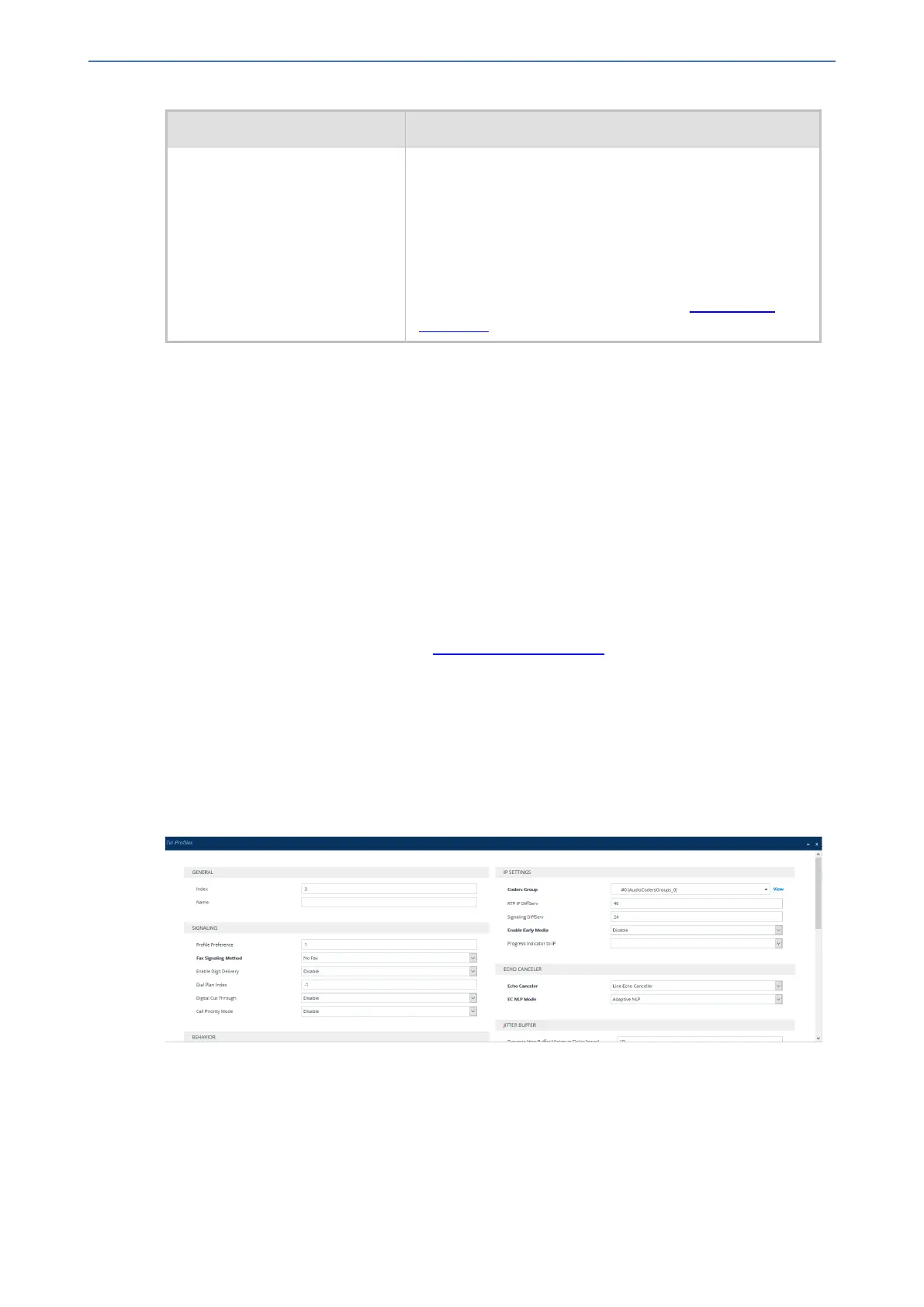CHAPTER19 Coders and Profiles
Mediant 1000 Gateway & E-SBC | User's Manual
Parameter Description
To play user-defined tones, you need to record your tones
and then install them on the device using a loadable
Prerecorded Tones (PRT) file, which is created using
AudioCodes DConvert utility. When you create the PRT
file, each recorded tone file must be added to the PRT file
with the tone type "acUserDefineTone<Index>". When you
want to specify the held tone for this parameter, use the
index number. For more information, see Prerecorded
Tones File.
Configuring Tel Profile
The Tel Profiles table lets you configure up to nine Tel Profiles. A Tel Profile is a set of parameters
with specific settings which can be assigned to specific calls. The Tel Profiles table includes a
wide range of parameters for configuring the Tel Profile. Each of these parameters has a
corresponding "global" parameter, which when configured applies to all calls. The main difference,
if any, between the Tel Profile parameters and their corresponding global parameters are their
default values.
Tel Profiles provide high-level adaptation when the device interworks between different equipment
and protocols (at both the Tel and IP sides), each of which may require different handling by the
device. For example, if specific channels require the use of the G.711 coder, you can configure a
Tel Profile with this coder and assign it to these channels.
To use your Tel Profile for specific calls, you need to assign it to specific channels (trunks or
endpoints) in the Trunk Group table (see Configuring Trunk Groups).
The following procedure describes how to configure Tel Profiles through the Web interface. You can
also configure it through ini file [TelProfile] or CLI (configure voip > coders- and-
profiles tel-profile).
➢ To configure a Tel Profile:
1. Open the Tel Profiles table (Setup menu > Signaling & Media tab > Coders & Profiles
folder > Tel Profiles).
2. Click New; the following dialog box appears:
3. Configure a Tel Profile according to the parameters described in the table below. For a
description of each parameter, refer to the corresponding "global" parameter.
4. Click Apply.
- 443 -

